A few days back I wrote about the one of our traditional ceremonies which is called Navjote and today I will like to share about the marriage traditions of my culture. I am a Zoroastrian and my roots are from Iran, lot of our ceremonies and traditions are common to Iranians, like the Navroze which falls on March 21st. It was somewhere in the 8th century that Zoroastrians had to flee from Iran to save their religion after the Arabs captured the land. I will write about this history someday, how our ancestors came to India, settled here and gradually adapting to Indian ways.
Coming back to the wedding story. This was my childhood friend's daughter wedding. We were neighbors in my paternal home and we spent lot of time together till we had got married. After marriage she moved to Canada and we lost touch for many years. Then thanx to social media, we could connect again and revive our bond of childhood times. I was very excited to attend her daughter's wedding, since we are all connected on Insta but I had not met the girls personally. Both her daughters have turned out to be pretty young girls and it was the elder one's marriage.
When I met my friend at the wedding, it was a very nostalgic feeling. We met after almost 10 years, that was the time when she had come to India for a holiday. After that I moved to Oman and then our trips always clashed and could not meet. We hugged each other and remembered our good old days.
In our tradition the marriage ceremony happens after the Sunset, which is then followed with dinner, dance and music. It is a big gathering and we normally invite our family, friends, neighbors, colleagues and almost everyone we know.
After the marriage ceremony, the bride and groom will visit the Fire Temple to seek blessings of the holy almighty, once they are back then they will be on the stage where all the guests will meet them one after another and will click pictures with the couple.
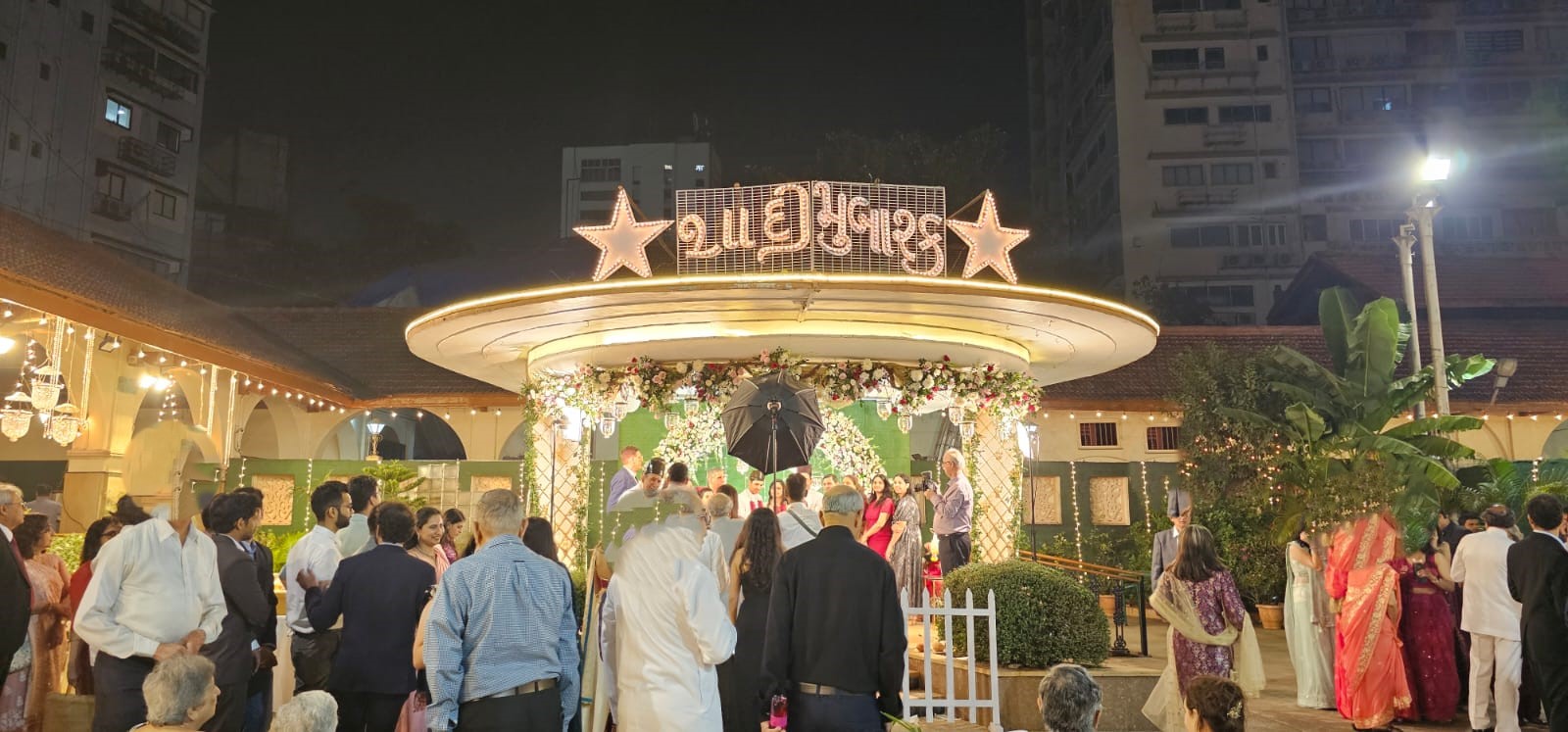
The groom wears a ceremonial wear which is called Dagli, and the bride wears a white color saree, which is normally a lace. Both of these are only made in white, because we consider the white as a symbol of purity. There are couple of places in the city where we normally do all our traditional ceremonies, these places are called Baugs. When we hire them for the occasion we decorate the place with flowers and lightings.
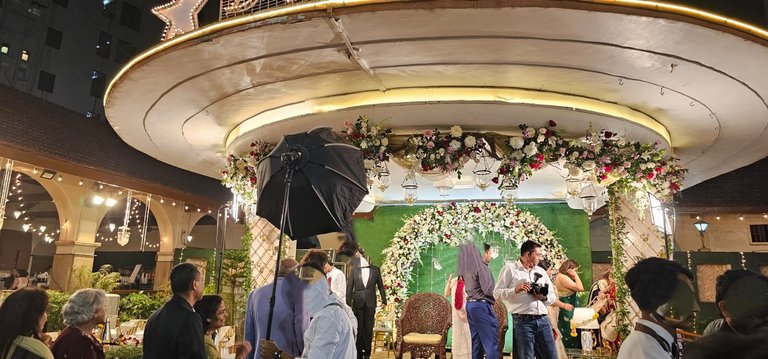
As you can see how the place is full. The crowd is normally between 600 to 1000 for any such occassions.
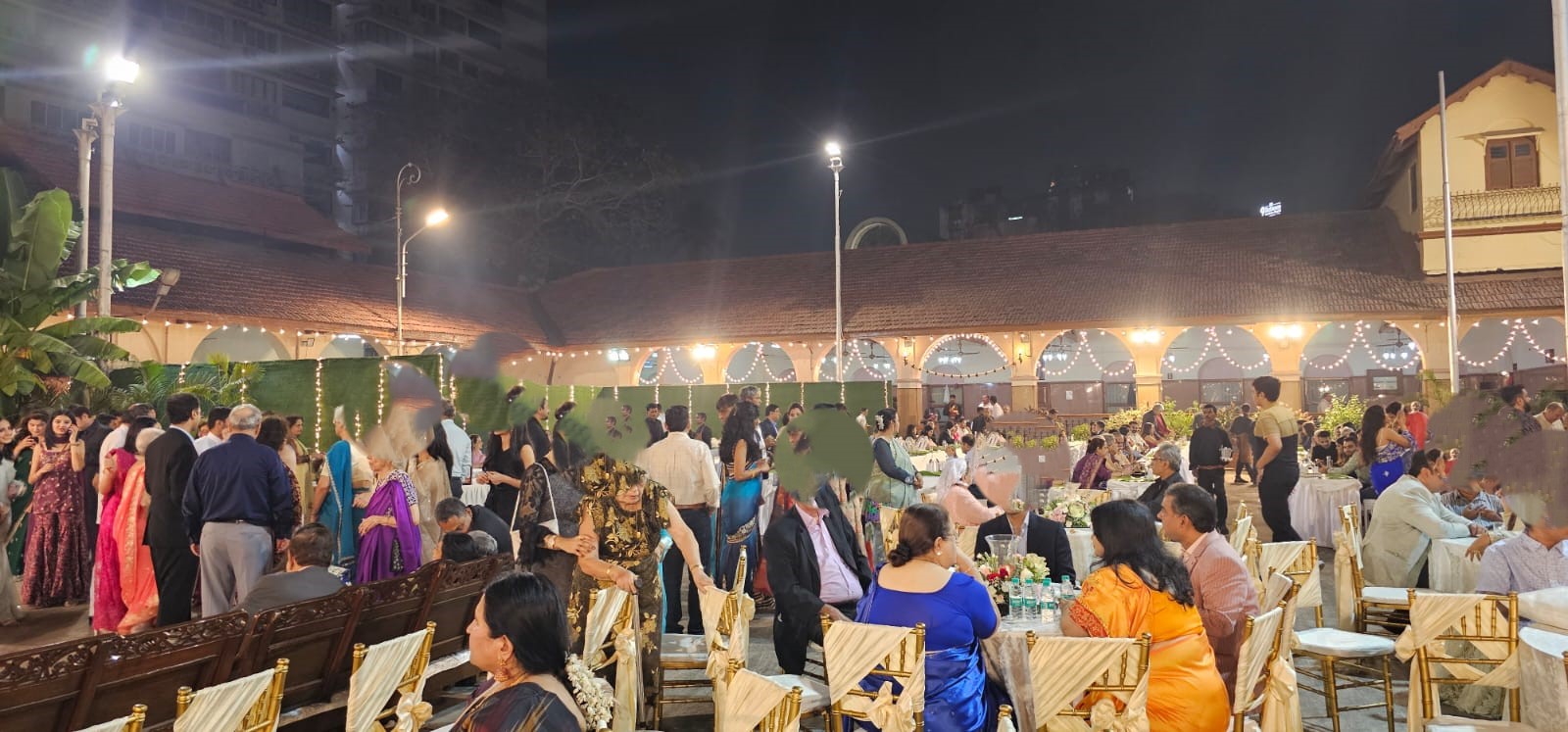
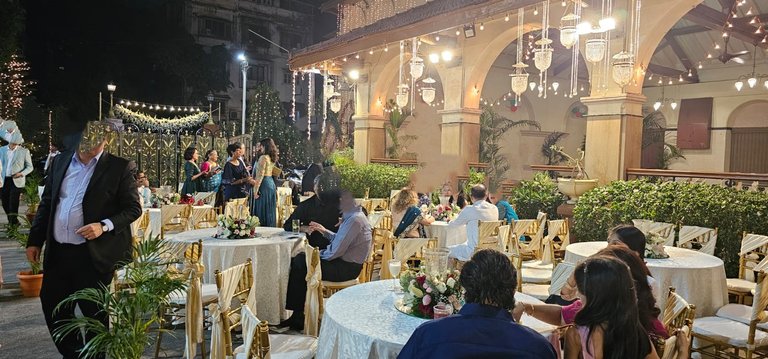
That's the DJ booth

Coming to the meals, again here we have a traditional way of serving. There are long tables laid and the food is served on Banana Leaves. Not everyone can seat at one go, so there are several seating's that happen. Majority of the people will prefer to go for the second seating since the 1st one becomes too early and the 3rd one gets very late to finish. Again it depends, majority of the family members will go for the 3rd seating as that is normally the last one and the bride and groom also sit in the 3rd one for their meals. So close family and friends will always like to sit with them.
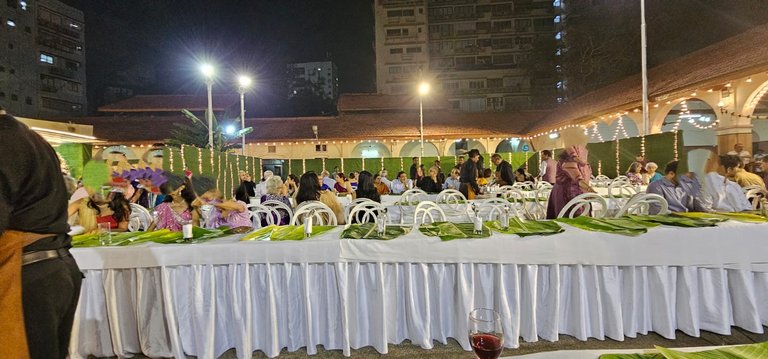
Food is served on Banana leaf. Ideally there is one dish of chicken, fish and meat each, there can be additions also which all depends on your budget. But the menu is as per our traditions. For Fish there is a specialty called Patra ni Machi, which is prepared with green chutney wrapped in banana leaf. Along with the main course there are some additions also.
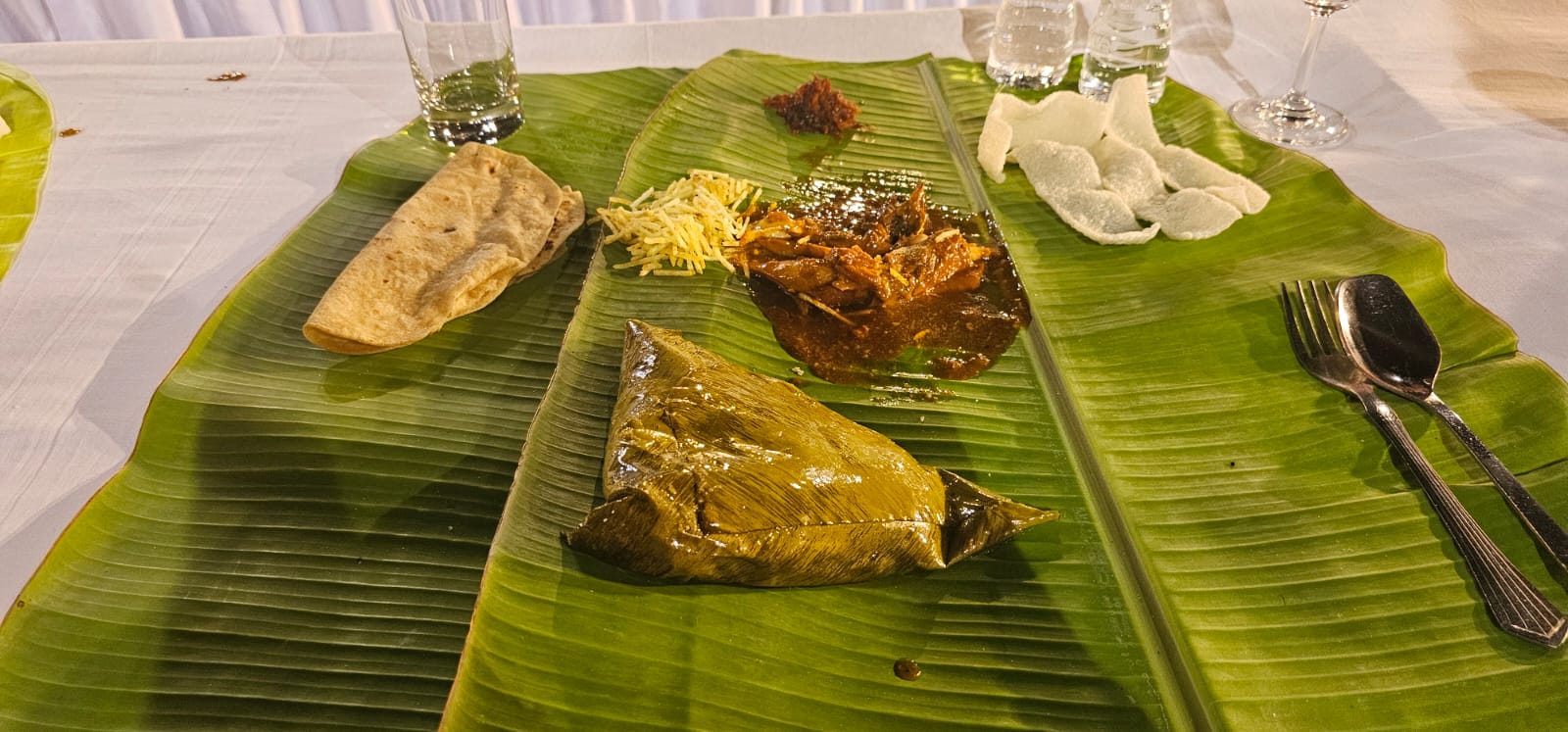
Attending these functions are like community gatherings. My community is very small and on occasions like these when we meet, we get to see many known faces.
Thank you for visiting my blog. 👼🏻👼🏻💖💖🌹🌺🌸
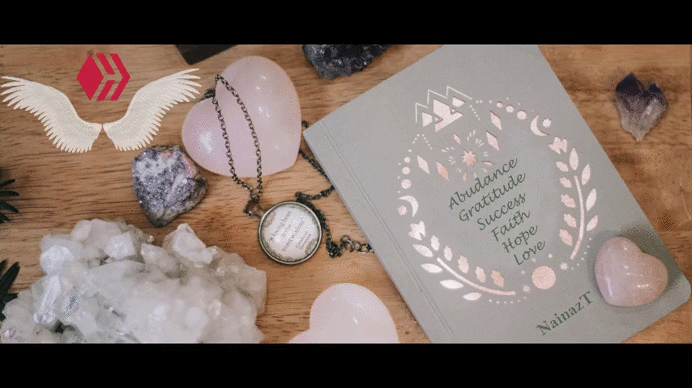

 |

|

|

|
Posted using Proof of Brain
